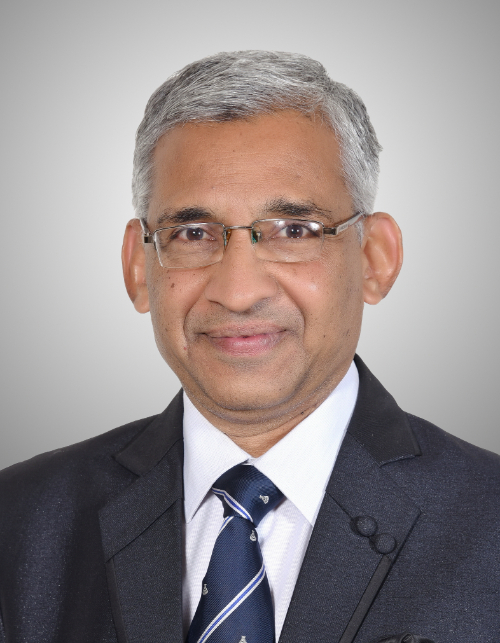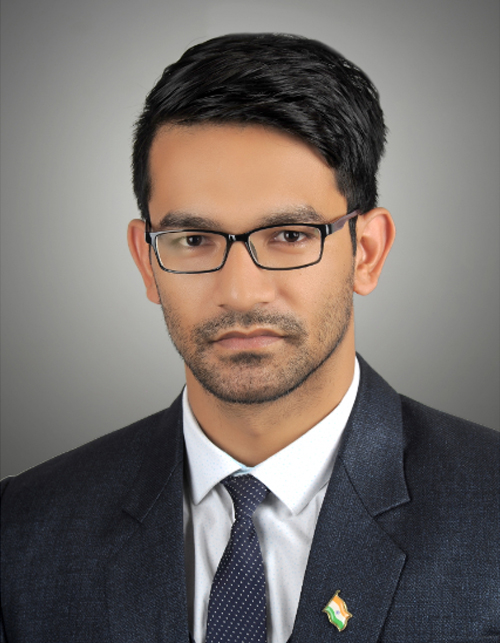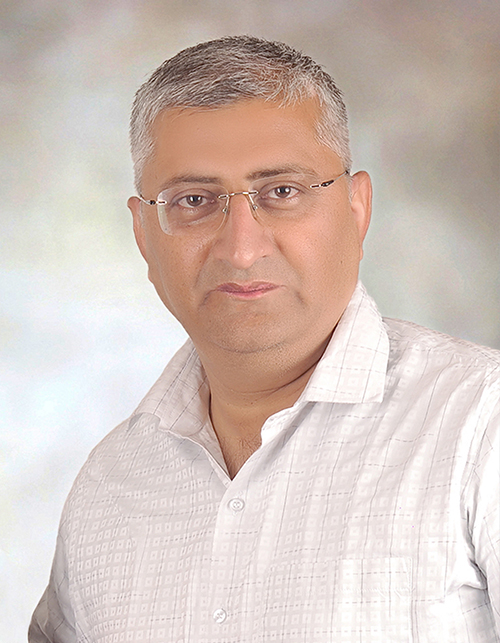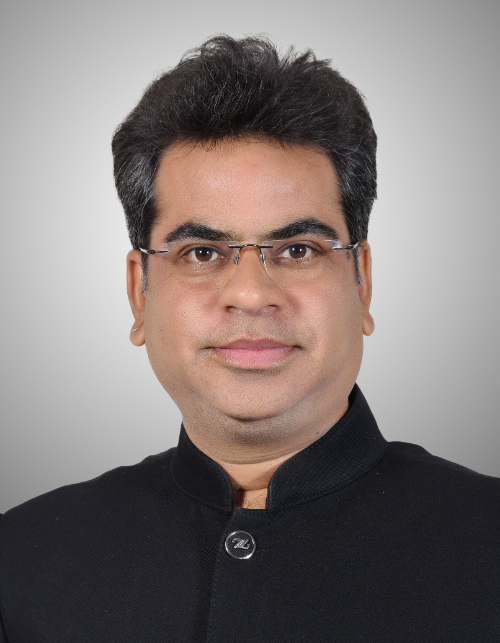
About Ajmer
Ajmer, with its legacy as a heritage city and future as a smart city is located in the heart of Rajasthan. The city is well connected with different means of transport. Jaipur International airport is the nearest airport which is situated at a distance of 132 km from Ajmer. The airport is well-connected to major metropolitan cities like Delhi, Mumbai, Ahmedabad, Kolkata, Chennai, Bangalore, Hyderabad etc. Ajmer is an important railway station that connects this holy place to different places like Jaipur, Marwar, Udaipur, Ahmedabad, Ujjain, Howrah and Bhopal. The city has advantage as it lies on the Golden Quadrilateral National Highway(NH) 8. RSRTC (Rajasthan State Road Transport Corporation) and private buses are running luxurious range of bus services from Delhi, Jaipur and various other major cities to Ajmer.

Lt Gen SH Kulkarni
PVSM, AVSM, VSM** (Retd)
Surrounded by the Aravalli Mountains, Ajmer, also known as Ajaymeru/Ajaimeur (meaning the Invincible Hill), was founded by Ajaipal Chauhan (who established the Chauhan Dynasty) in the seventh century. The city was also ruled by the legendary Prithviraj Chauhan, the last Hindu king of Delhi. Ajmer, the city where the Dargah of the Great Sufi Saint Khwaja Moinuddin Chishti stands, is a sacred center of pilgrimage. Hallowed by the memories of the great seer, Ajmer has earned the epithet of ``Madinatul Hind or the Madina of India``.
Ajmer is a center of culture and education. It is famous for its rich Indo-Islamic, Royal Rajasthani, Indo-Saracenic and Jain styles of architecture. The city is home to the prestigious Mayo College, a school set up exclusively for Indian nobility, by the Britishers, has today metamorphosed into a self-sustainable smart campus, a home to 816 young boys from all walks of life. In addition, the city's built heritage includes Nasiyan (Red) Temple, Salemabad (Nimbark Peeth), Taragarh Fort, Adhai – Din Ka- Jhonpra (a religious structure), Ana Sagar (an artificial lake), the museum (Magazine, once the royal residence of Emperor Akbar) et al. Ajmer is also the base for visiting Pushkar (14 km), the abode of Lord Brahma, lying to its west with a temple and a picturesque lake. Ajmer, the seat of sufi tradition, exudes the promise of a vibrant future built upon with its rich and glorious past.
Pushkar

Pushkar popular for its only existing 14th Century Brahma Temple and its mystical charm is set on Pushkar Lake, a sacred Hindu site with 52 ghats (stone staircases) where pilgrims bathe. This pilgrim town is situated on the edge on the desert and is separated from Ajmer by the Nag Parbat (the snake hill).
Dargah Sharif

The seat of Sufi tradition, the Ajmer Dargah is a mecca of the East and one of the holistic Muslim shrines in the world. The entrance gates, which loom 70 ft over the congested bazaar, were built by the Nizam of Hyderabad in 1915. Khwaja Moin-ud-din Chisti, a Sufi saint from Persia made this place his abode from 1192 till he died in 1236 AD.
Mayo College

Mayo College is a boys-only independent boarding school in Ajmer, Rajasthan, India founded in 1875 by Richard Bourke, 6th Earl of Mayo who was also the Viceroy of India from 1869 to 1872. The school is one of the oldest public boarding schools of India. The present principal is Lt Gen (Retd) Surider Kulkarni, who has occupied the post since Jan. 2015 and is the 17th principal of the school.
Taragarh Fort

The Taragarh Fort, Ajmer built in 1354 A.D. is one of the first ones to be set on a hilltop, and is famed for its architectural brilliance. The giant fort stands guarding the city. It gives a panoramic view of the city situated in Nagpahari of Aravalli ranges, this fort has immense archaeological and historical importance. The fort guarding Ajmer, was the seat of the Chauhan rulers and was originally believed to be built by Mughal ruler Akbar.
Architecture
Several designs were submitted in Grecian, Indo-Saracenic and Kolhapur styles by different engineers. The viceroy finally adopted Major Mant's Indo-Saracenic design in June 1875. The construction began in 1877 and was completed in 1885 at a cost of 3.28 lakhs. Major Mant's design became a classic symbol of Indo-Saracenic architecture and apart from being quoted in architectural courses even today, the design now lies in the archives of the British Museum in London.
Ajmer, the city where the Dargah of the Great Sufi Saint Khwaja Moinuddin Chishti stands, is a sacred center of pilgrimage. Hallowed by the memories of the great seer, Ajmer has earned the epithet of ``Madinatul Hind or the Madina of India``.
Bharatpur Agency
``It is no easy matter to decide what course we ought to pursue in order to ensure to the sons of the aristocracy of this country a liberal and enlightened education, but I think the time has or must shortly come when the government of India must find itself compelled to move in the matter. When the natural guardians are alive, we could of course only earnestly press and urge upon them the desirability of receiving every advantage that education can offer to their children, but whereas in the case of Bharatpur, the government becomes the guardian of the minor I think we ought in future, without fear of consequences on the score of prejudice or misinterpretation of our intentions, to insist open the youth being brought up as gentlemen should be. But to carry this into effect, we must first of all establish an Eton in India. We require a college on an extensive scale, with ample accommodation within its walls for a large number of pupils and the followers (few in number of course) who would accompany them.
A complete staff of thoroughly educated gentlemen, not merely bookworms, but men fond of field sports and outdoor exercise, would be necessary, and with these should be associated the elite of the Native gentlemen belonging to the Educational Department. The pupils, or rather their guardians, the tutors, should be allowed ample funds from the coffers of the state to which the minor belonged, and the holidays should be spent in constant travel all over the Continent of India, with an occasional visit to their homes. Many will say that such a scheme is impossible; I admit that it is surrounded with difficulties, but I do not think they are insuperable. If we desire to raise the Chiefs of India to the standard which they must attain to keep pace with the ever advancing spirit of the age, if we wish to make clear to them that our only object is to perpetuate their dynasties, and to make them worthy feudatories of the crown of England, we must place within their sons a better education that they can now possibly obtain. Then, and not till then, we can hope to the native Princes of India occupying the position they ought to hold as the promoters of peace, prosperity and progress amongst their own people, and the hearty supporters of British authority and power.``
Coat of Arms
This was composed from the design furnished by Mr.Lockwood Kipling, a former Principal of the School of Arts, Lahore and father of the famous Rudyard Kipling. In the Upper Centre of the Shield are Mayo Arms, and Quarterings, a Lion Rampant and an Open Hand. On the right and left are the Sun and the Moon, typical of Suryawanshi and Chandrawanshi, the two great families of Rajputs. Below are the Panch Rang, the five sacred colours of the Rajputs, Red, Gold, Blue, White and Green. In the centre is a Rajput fort - two towers connected by a curtain. On the right is a Bhil warrior with string bow and quiver full of arrows. On the left is a Rajput, well armed, wearing a steel helmet with three plumes, a shield on his back, a dagger and qatar in his belt, and a suit of chain covered with embroidered cloth and gauntlet on his hand.
The motto is ``Let there be Light``. The badge is a peacock, the sacred bird of Rajputana, standing on a two edged, two handed Rajput Sword Khanda.
Eton of East
Mayo College has been called the “Eton of the East” since its founding in 1870 AD. This is best expressed in the words of Lord Lytton, Viceroy of India on his visit to Mayo as the Chief Guest on the Annual Prize Giving day on Dec 5, 1879.
“There are I think many points of resemblance between the great Rajput clans and the English houses founded by our northern ancestors. Both of them owe to the same characteristics the positions they have made, and still maintain for themselves in the political hierarchy of an ancient race. Those characteristics are energy, fearlessness, the love of healthful exercise, an instinctive aptitude for active life, an instinctive scorn for all unmanly ease. No race, no class can long maintain its social and moral ascendancy if it degenerates in physical vigor. And it is perhaps a special merit of our English system of education that it aims at training, developing and strengthening not only the mind but also the body. The idea was well expressed long ago by Colonel Walter in an excellent and most suggestive report which may have influenced Lord Mayo when he founded the present college. In that very sensible report Colonel Walter pointed out that what was then most needed for the education of India’s young rulers and nobles was an Indian Eton. Ajmer is India’s Eton and you are India’s Eton boys.”
A complete staff of thoroughly educated gentlemen, not merely bookworms, but men fond of field sports and outdoor exercise, would be necessary, and with these should be associated the elite of the Native gentlemen belonging to the Educational Department. The pupils, or rather their guardians, the tutors, should be allowed ample funds from the coffers of the state to which the minor belonged, and the holidays should be spent in constant travel all over the Continent of India, with an occasional visit to their homes. Many will say that such a scheme is impossible; I admit that it is surrounded with difficulties, but I do not think they are insuperable. If we desire to raise the Chiefs of India to the standard which they must attain to keep pace with the ever advancing spirit of the age, if we wish to make clear to them that our only object is to perpetuate their dynasties, and to make them worthy feudatories of the crown of England, we must place within their sons a better education that they can now possibly obtain. Then, and not till then, we can hope to the native Princes of India occupying the position they ought to hold as the promoters of peace, prosperity and progress amongst their own people, and the hearty supporters of British authority and power.``
Schedule a campus visit
Seeing is believing. To experience the infrastructure and atmosphere of Mayo, do get in touch with us



































































